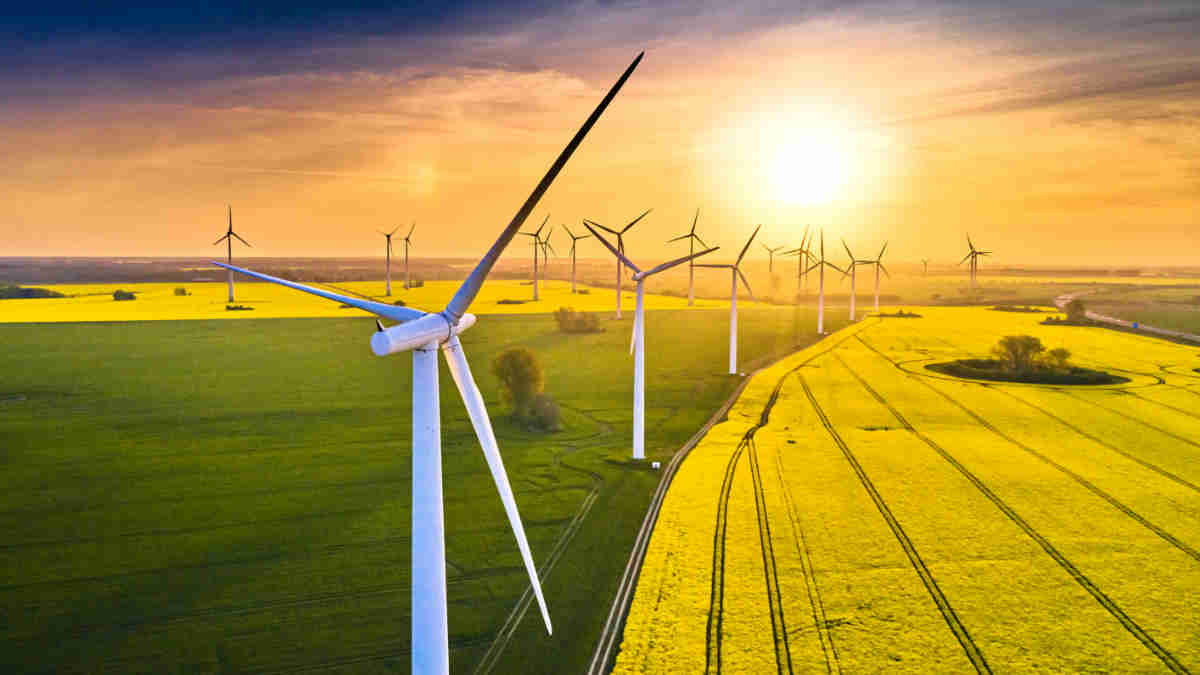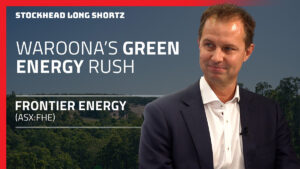The Ethical Investor: The year hydrogen comes of age, and 4 other cleantech trends to shape the world

5 Cleantech trends set to shape the world in 2023. Picture Getty Image.
- The world is falling behind in its Paris Agreement targets
- Standard Chartered has revealed five cleantech trends it believes will shape the world in 2023
- Stockhead names ASX stocks that could potentially benefit from these trends
The odds the world will meet its key climate goals outlined in the 2015 Paris Agreement are slowly fading.
If the current rate of carbon emissions continues, there’s only a 50% chance the world will reach the 1.5°C warming threshold by the end of this decade.
It is against this backdrop that Standard Chartered (Stanchart) along with Bloomberg have released the top five cleantech trends that are set to shape the world in 2023.
While each trend touches on a different part of the transition, they all have one thing in common: each could present a multi-billion-dollar opportunity for many companies, including those on the ASX.
1. The year of clean energy supply partnerships
Energy security concerns caused by geopolitics are forcing the US government to incentivise manufacturers to onshore or nearshore supply chains. The US Inflation Reduction Act has earmarked US$60 billion for domestic clean energy manufacturing in the US.
As a result, several Asian battery manufacturers are starting to partner with automobile OEMs in the US. For instance, GM and LG Chem recently announced a joint venture to build EV battery manufacturing plants in Ohio and Michigan.
Some Aussie miners that have projects in the US could also become beneficiaries in this rapidly changing trend, including:
Piedmont has a supply agreement with Tesla.
In January, Piedmont and Tesla mutually agreed to sign an amended agreement where Piedmont will deliver approximately 125,000 metric tons of SC6 to Tesla beginning in the second half of this year through the end of 2025.
Syrah runs a plant at their Vidalia facility in Louisiana, USA.
In July last year, the US Department of Energy issued a US$102.1 million loan to Syrah for the expansion of this facility.
The Vidalia facility produces graphite-based active anode material (AAM), a critical material used in lithium-ion batteries for electric vehicles (EVs) and other clean energy tech.
American Rare Earths (ASX: ARR)
In 2021, the US updated an official list of critical minerals such as nickel and zinc that are central to its energy and defence strategy as the country aims to reduce its dependence on China.
This bodes well for companies like ARR, which is developing its 100% owned magnet metals projects, Halleck Creek in Wyoming, and La Paz in Arizona.
Both have potential to be among the largest, rare earths deposits in North America.
2. The dawn of industrial decarbonisation
Heavy industry is one of the biggest challenges to our global net-zero ambitions.
While a silver bullet hasn’t been found, collaboration between industry and developments in the global carbon markets are encouraging signs.
Lawmakers in Europe reached a deal in December that will strengthen and expand the EU’s carbon market. With carbon prices forecast to reach EUR160 per tonne by 2030, heavy emitters have a greater incentive to decarbonise than ever.
Global asset managers like KKR for instance have taken notice and has invested billions of dollars in companies that offer clean energy solutions.
In Australia, companies that could benefit from this trend include:
In December, BHP took a stake in I-ROX to speed development of a technology that could help decarbonise steps of the mineral extraction process.
I-Rox uses high-voltage pulses of power to disintegrate rock, an approach that has been tested in labs for years but has yet to find commercial applications.
BHP CEO Mike Henry said the collaboration with I-Rox will contribute to improving competitiveness of and help decarbonise its operations.
Calix has developed a breakthrough carbon capture technology called Project LEILAC that enables cement industries to reduce their CO2 emissions.
The technology re-engineers the existing process flows of a traditional calciner, indirectly heating the limestone via a special steel vessel. This unique system enables pure CO2 to be captured as it is released from the limestone, as the furnace exhaust gases are kept separate.
3. Gaga for gigafactories
As the demand for electric vehicles grows, so does the demand for the batteries that power them.
By 2030, global EV battery demand will reach 3.5TWh, according to BloombergNEF’s Economic Transition Scenario. That’s more than 4x greater than the 806GWh of lithium-ion battery manufacturing capacity as of end-2021.
Catering to this demand would require gigafactories to be built at speed and scale. Currently, China dominates the battery manufacturing sector, but the Inflation Reduction Act could potentially tip the scale.
ASX companies that could benefit from battery demand include:
Magnis Energy Technologies (ASX:MNS)
In August last year, Magnis announced that commercial production has started at its Imperium3 New York lithium-ion battery manufacturing plant (iM3NY) in New York.
Magnis is looking to leverage off the expertise from its manufacturing partner Charge CCV (C4V), as well as the learnings from its New York Li-ion battery factory to deliver an Australian Li-ion manufacturing plant.
The company owns a 33% stake in Imperium Townsville (iM3TSV) Battery plant in Townsville.
Redflow is a battery manufacturer that produces zinc-bromine flow batteries that can be used for energy storage in renewable energy systems.
The battery offers a long-life design and chemistry that makes use of cost-effective, fire-safe, and low toxicity materials.
Redflow’s batteries are ideal for extended duration in a wide range of commercial installations and multi-megawatt hour storage deployments.
Novonix develops and produces high-performance materials for lithium-ion batteries out of its plant in Chattanooga, Tennessee.
In 2022, the company signed an agreement to be the exclusive supplier of graphite anode material to KORE as part of its thrust into North America.
Novonix recently announced its plans to scale the US production of synthetic graphite anode materials following the recent announcement that KORE had closed US$75 million in fresh funding.
4. Petro dollars to pump up climate tech
Middle Eastern countries are flush with cash after oil prices touched their highest levels since 2014 last year.
These countries are keen to invest some of this windfall in the clean-energy technologies of tomorrow.
Saudi Arabia for example, aims to build 54GW of renewable energy capacity by 2030, while the UAE is eyeing 100GW of renewable energy capacity at home and abroad.
ASX listed companies to benefit from the surge in clean energy technologies include:
ReNu Energy develops and operates renewable energy projects, including solar PV, battery storage, and biogas projects.
The company also provide senergy efficiency and energy management services, and is a stakeholder in Enosi, an energy software provider that manages clean energy traceability.
ReNu says that with enterprises seeking to power their operations using clean energy 24 hours a day, tracing carbon-free energy at the time of use allows them to demonstrate True Zero, the next global benchmark.
Genex specialises in the development and operation of large-scale renewable energy projects.
The company is currently constructing an 250MW/2,000MWh Kidston Pumped Storage Hydro Project in Queensland.
The 50MW Jemalong Solar Project (JSP) meanwhile is located in NSW and provides geographical diversification to Genex’s portfolio. JSP was energised in December 2020 and is now fully operational.
5. Hydrogen: finally moving from hype to reality
According to StandChart, this could be the year that we see hydrogen finally gain traction.
Progress in the hydrogen market was somewhat stalled in 2022 due to lack of viable offtake options despite significant developer interest and capital. The key catalyst will come this year in the form of policy.
According to BloombergNEF, 35 countries have a hydrogen plan and 17 are preparing one. The US Department of Energy, for instance, aims to reduce the cost of hydrogen to $1/kg by 2031.
In Australia, the national hydrogen strategy is set for a review following an agreement by state and federal energy ministers last Friday.
The meeting’s communique stated that we need to “ensure the national strategy positions Australia on a path to be a global hydrogen leader by 2030 on both an export basis and for the decarbonisation of Australian industries.”
There are several hydrogen plays on the ASX, including:
Frontier Energy (ASX:FHE) – Frontier is making strong progress at its Bristol Springs Green Hydrogen Project where it signed a collaboration agreement with Waroona Energy to explore how they can benefit from sharing resources for renewable energy production. Waroona is developing a 241MW solar farm adjacent to Bristol Springs and like FHE, key approvals are in place with construction set to kick off in 2023.
Hazer Group (ASX:HZR) – Hazer developed and executed a MOU with Suncor Energy and FortisBC Energy to develop a 2,500tpa low-carbon emission hydrogen production facility in British Columbia, Canada based on the Hazer technology.
Hexagon Energy (ASX:HXG) – HXG has an MOU in place with international solar company FRV who it anticipates will come on as partners for the renewable component of the WAH2 Project.
Provaris (ASX:PV1) – Provaris has lodged its EPBC Referral with the Australian Federal Government’s Department of Climate Change, Energy, the Environment and Water for its proposed Tiwi H2 Project on the Tiwi Islands.
Pure Hydrogen (ASX:PH2) – PH2 has an agreement with BLK Auto, which will allow Pure Hydrogen to re-sell an expanded range of hydrogen fuelled trucks, buses and storage pods to customers in Asia Pacific, India and Africa.
Montem Resources (ASX:MR1) – MR1 completed pre-feasibility studies for the pumped hydro energy storage and green hydrogen electrolyser elements of the Tent Mountain Renewable Energy Complex in Alberta, Canada as commercial aspects continue to advance.
Stockhead has not provided, endorsed or otherwise assumed responsibility for any perceived financial product advice contained in this article.
Related Topics
UNLOCK INSIGHTS
Discover the untold stories of emerging ASX stocks.
Daily news and expert analysis, it's free to subscribe.
By proceeding, you confirm you understand that we handle personal information in accordance with our Privacy Policy.








